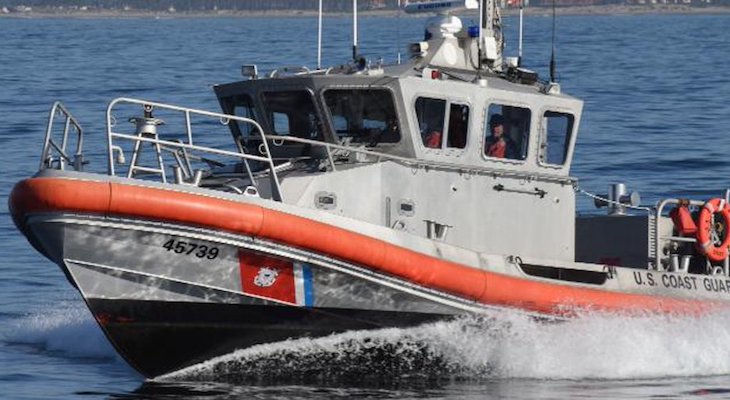Source: U.S. Coast Guard
The Coast Guard encourages members of the public to review and participate in safe boating practices during National Safe Boating Week and ahead of Los Angeles Fleet Week.
In conjunction with National Safe Boating Week, fleet week will take place in Los Angeles from May 24th to the 30th. Fleet week recognizes and honors military members and is historically a busy weekend for the boating community.
“With Los Angeles Fleet Week and Memorial Day this weekend we want the public to enjoy all the awesome holiday activities and do so while adhering to safe boating practices,” said Capt. Rebecca Ore, Coast Guard Sector Los Angeles-Long Beach Commander. “We encourage the public to practice safe boating, always wear life jackets, carry a reliable means of communication, and file a float plan before going out on the water.”
Fleet week also means historically an increase in U.S. naval vessel and maritime traffic; we ask the public to review the following information pertaining to Naval Vessel Protection Zones.
- Understand naval vessel protection zones 33 CFR § 165.2030 (b). A naval vessel protection zone is a 500-yard regulated area of water surrounding large U.S. naval vessels that is necessary to provide for the safety or security of these U.S. naval vessels. A naval vessel protection zone exists around U.S. naval vessels greater than 100 feet in length overall at all times in the navigable waters of the United States, whether the large U.S. naval vessel is underway, anchored, moored, or within a floating dry dock, except when the large naval vessel is moored or anchored within a restricted area or within a naval defensive sea area. To request authorization to operate within 100 yards of a large U.S. naval vessel, contact the Coast Guard, the senior naval officer present in command, or the official patrol on VHF-FM channel 16.
Water temperatures are estimated to be near 60 degrees Fahrenheit, despite the fact that air temperatures are forecasted to reach 70 degrees Fahrenheit. The public should be aware that hypothermia can occur if the water is 70 degrees Fahrenheit and below.
We encourage the public to participate in National Safe Boating Week and review these key safe boating tips in advance of summer time boating activities:
- Always wear a life jacket. There is usually very little time to reach for stowed vests when accidents occur. Wearing one at all times reduces the risk of drowning. Federal law requires mariners to have a personal flotation device aboard for each passenger.
- Have sufficient means of communication including a VHF radio. VHF channel 16 is the international hailing and distress frequency and can be used to reach the Coast Guard during emergencies.
- Large commercial and military ships have the right-of-way over smaller and more maneuverable boats on the water. It is illegal, according to Rule 9 of the Inland and International Rules of the Road, for boats less than 65 feet in length to impede the passage of these ships or to cross in front of these ships that impede their passage.
- Be on the lookout for illegal charters. If the vessel is carrying six or more passengers, it must have a valid Coast Guard Certificate of Inspection. Passengers can ask the captain of the vessel to verify their license and the inspection status of the boat.
- Do not carry more passengers than a boat is designed for. Check the boat’s maximum capacity plate (if equipped). Do not carry more passengers or more weight than the boat is designed for. Overloading can cause the boat to ride lower in the water, reduce the vessel’s stability and greatly increase the chance of capsizing. Additionally, too much weight on one side of the boat can cause the vessel to list and increase the chances of capsizing.
- Never boat under the influence. It is illegal to operate a boat while under the influence of alcohol or drugs. There are stringent penalties for violating BUI/BWI laws, which can include large fines, suspension or revocation of boat operator privileges and jail terms.
- Never turn your back on the water. There are strong rip currents along the Pacific coast, and sneaker waves are common.
- Dress for the water temperature, not the air temperature. Even if boaters do not plan to enter the water, they should be prepared for an emergency. Paddleboarders, kayakers and wind surfers who are likely to go in the water should wear a wetsuit to decrease their risk of hypothermia and a life jacket to prevent them from drowning before rescuers can get on scene.
- File a float plan. A float plan is simply letting family and friends know where you are going and your expected time of return. File a float plan with someone who is not getting underway with you and stick to the plan. A float plan assists responders in the search of an overdue boater who may be in distress. Float plans can be filed through the Coast Guard’s safety app using the following link. https://floatplancentral.cgaux.org/
For more boating information, go to http://www.uscgboating.org/ and for weather conditions please visit http://www.weather.gov/.





